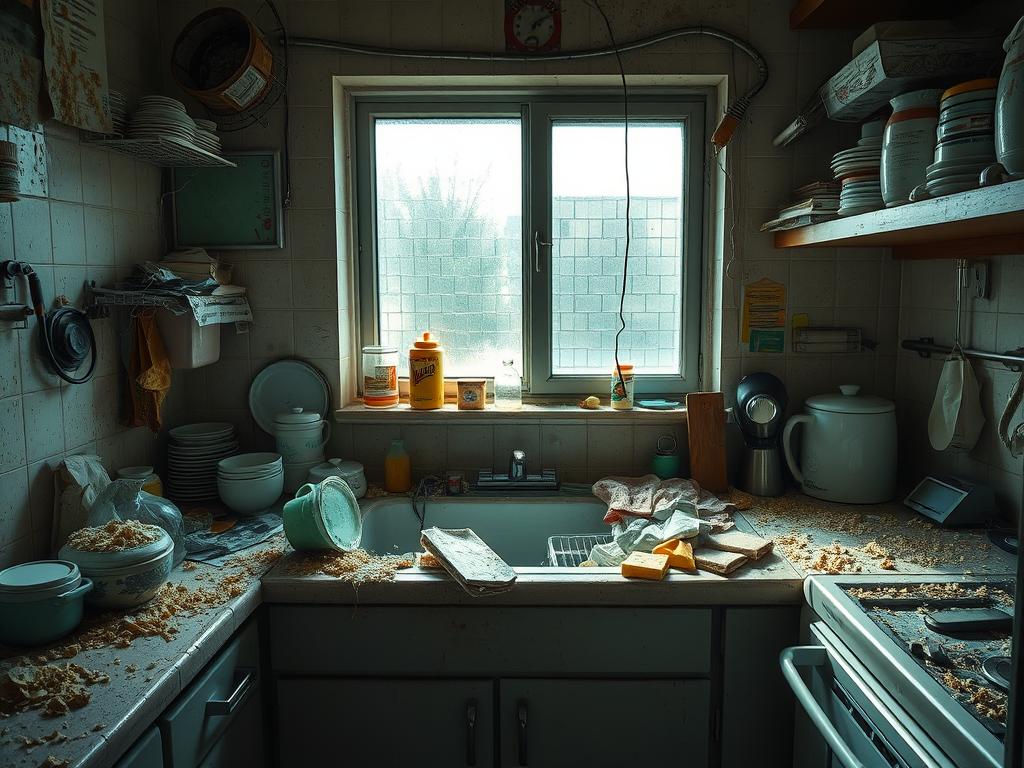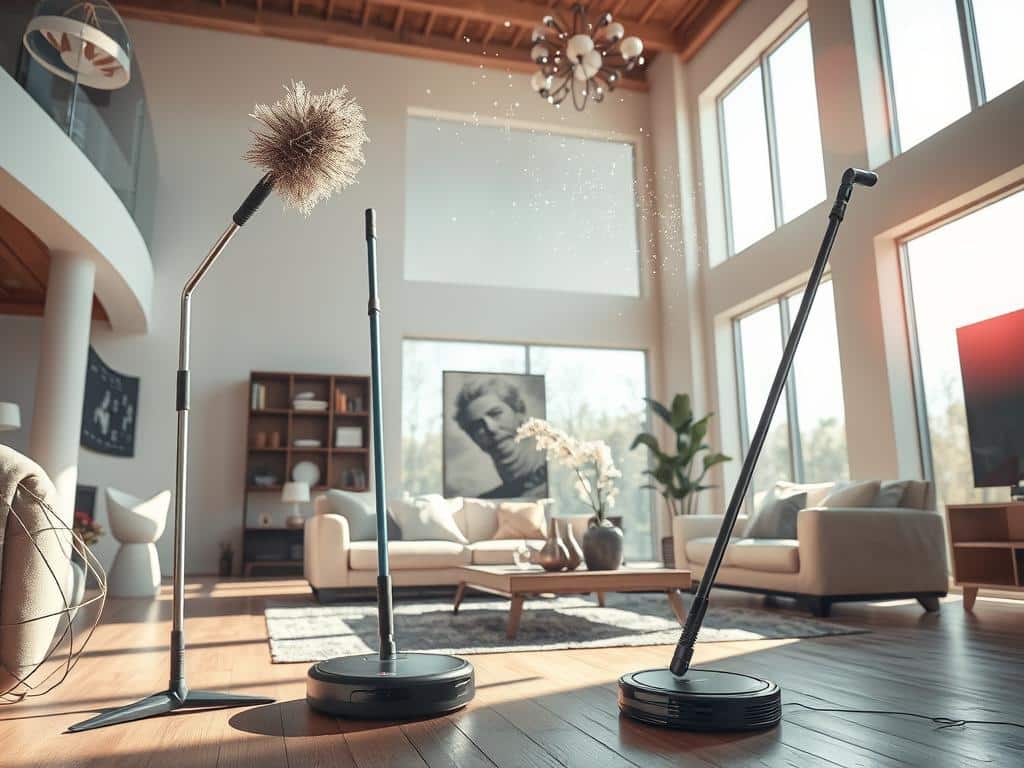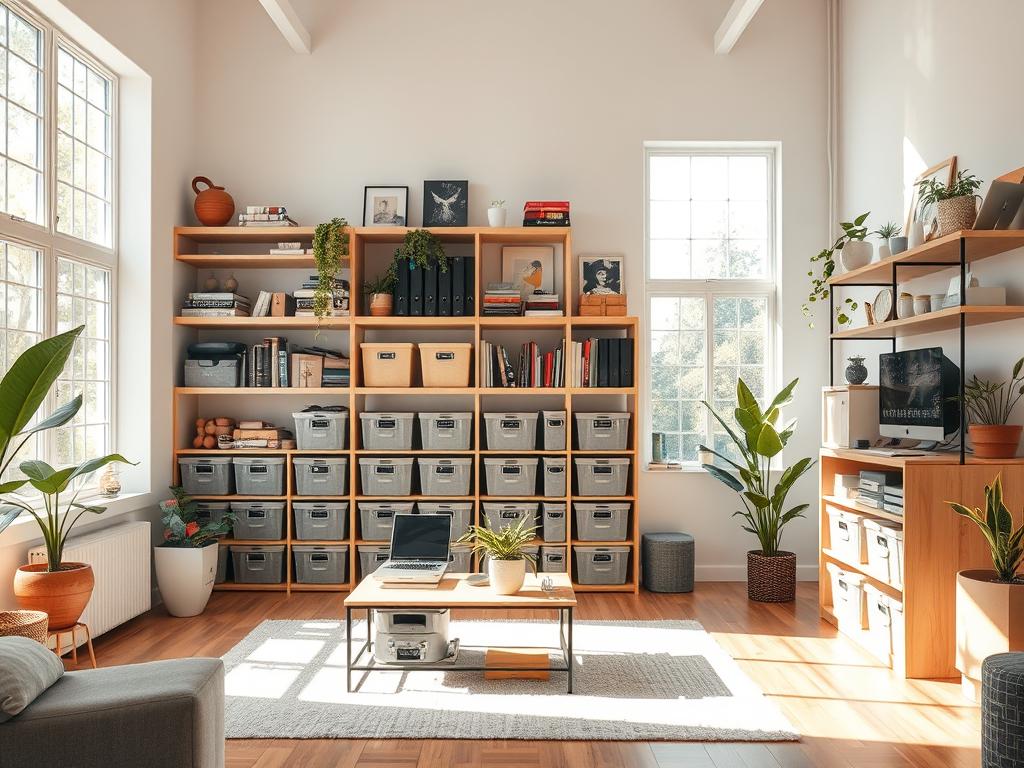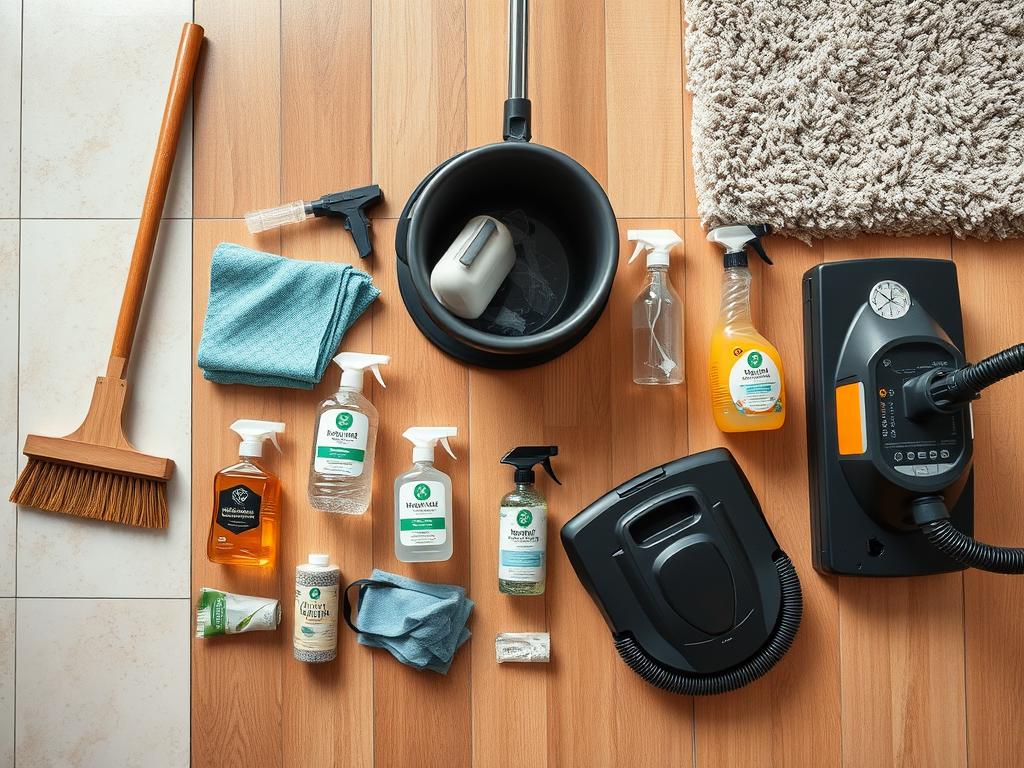
Understanding the unique cleaning requirements for hardwood, tile, and carpet is crucial to maintaining the longevity and aesthetics of your floors. To prevent stains, consider adopting preventive habits such as removing shoes at the door and using doormats. Regular light cleaning with appropriate methods tailored to each floor type ensures they stay in top condition.
For deeper cleaning, methods such as vacuuming and wet mopping with suitable cleaners are recommended. Seasonal or annual professional cleanings and prompt stain treatments can significantly contribute to household cleanliness and maintaining the appearance of your floors.
Cleaning Hardwood Flooring
Maintaining the pristine condition of your hardwood floors requires regular care and attention. This guide will walk you through essential steps to ensure effective hardwood floor care, covering everything from daily floor upkeep to deep cleaning methods and stain removal techniques.
Daily Maintenance
For daily floor upkeep, the basics are simple yet essential. Use a broom or a specially designed hardwood floor mop to sweep away dust and dirt. Ensuring that your hardwood floors are dust-free prevents small particles from scratching the surface. Vacuuming your floors once a week with a soft-bristle attachment can also help maintain their appearance and integrity.
In areas with heavy foot traffic, clean more frequently—every week or two with a damp mop. For best results, avoid oversaturating the mop and wipe spills promptly to prevent stains. Utilizing entryway mats and placing rugs in high-traffic areas can further protect your floors.
Deep Cleaning Methods
While regular daily floor upkeep is vital, deep cleaning hardwood every one to two months is necessary for maintaining their lustrous finish. Start by vacuuming to remove any abrasive dirt and debris. For deep cleaning, use a microfiber mop and a recommended hardwood floor cleaner, such as Bona Hardwood Floor Cleaner. Avoid harsh chemicals like white vinegar or lemon juice as their acidity can damage the finish.
Do not forget to clean with the grain of the wood to avoid streaks and minimize moisture on the floor. Keeping hardwood floors dry during and after cleaning helps prevent water damage. Deep cleaning also includes periodic floor maintenance such as applying a fresh coat of finish every three to five years and sanding and refinishing every decade.
Removing Stains
Effective stain removal hardwood floors starts with acting quickly. Blot any spills using a clean, dry cloth. For deeper stains, a mixture of dish soap and water can be applied with a sponge. If this does not suffice, consider more potent stain removal methods, but be cautious of leaving chemical residues that can affect the wood.
To tackle tough spots like scuff marks, a damp sponge may work for lighter scuffs, while baking soda on a damp sponge can handle heavier ones. Regular maintenance, such as using furniture pads and avoiding strong chemicals, will help keep your hardwood floors looking their best over time.
For a detailed guide on caring for your hardwood floors, resources such as Architectural Digest offer valuable insights.
Cleaning Tile Flooring
Keeping tile floors in pristine condition demands consistent upkeep and meticulous cleaning practices. Whether you’re tackling ceramic, porcelain, or natural stone tiles, adhering to the right tile floor maintenance techniques is vital for longevity and cleanliness.
Regular Cleaning
Regular cleaning is essential for tile floor upkeep. Start by sweeping or vacuuming the floor to eliminate loose dirt and debris. For ceramic and porcelain tiles, mopping every one to two weeks with a mixture of mild detergent and water works best. Use ¼ cup of mild detergent mixed into 1 gallon of water for optimal results. Avoid using lemon, vinegar, or acidic substances on slate tile floors, as these can cause discoloration.
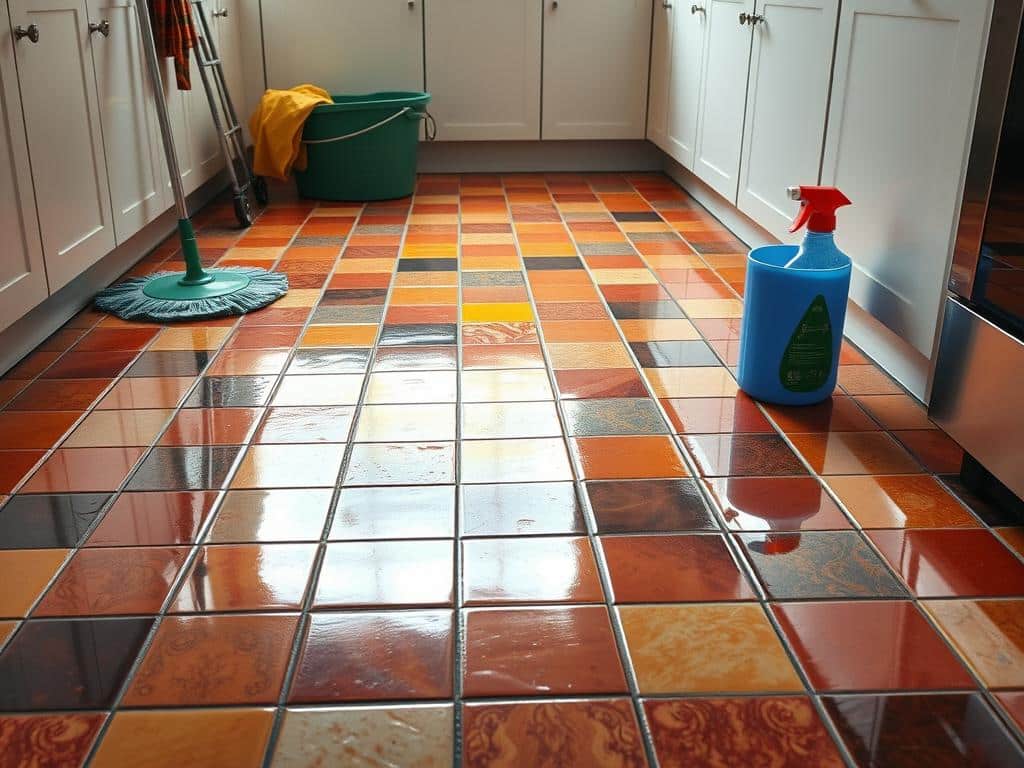
For unpolished or unglazed porcelain tile floors, wet and scrub the surface for 5 to 10 minutes to remove stubborn dirt. Use a pH-neutral cleaner for granite and marble tiles to prevent surface damage. Linoleum and cork tiles require specific cleaners based on their finishes. Ensure a soft broom is used on natural stone tiles to remove dust before cleaning.
Grout Cleaning Tips
Cleaning grout can be challenging without the right approach. Create a paste using baking soda and water to scrub grout lines effectively. Utilize a toothbrush or a grout brush to work the paste into the grout, tackling tough stains. After cleaning, use a silicone-based sealer on the grout to repel future stains and keep it looking fresh.
Avoid frequent use of steam mops on grout, as this may accelerate damage and cause pitting and discoloration over time. For particularly stubborn or grimy grout, consider applying a grout colorant as a last resort.
For more in-depth guidance on tile floor maintenance and tips for achieving thorough cleanliness, you can visit this comprehensive resource.
Implementing these strategies in your tile floor upkeep routine will ensure they stay clean and presentable, enhancing the overall aesthetic and durability of your flooring.
Cleaning Carpet Flooring
Regular and thorough carpet cleaning is essential to prolong the lifespan of your carpet. Effective vacuuming techniques and prompt carpet stain removal are key to maintaining a pristine appearance. Utilize the following guidelines to ensure that your carpet remains clean and free of dirt, stains, and other contaminants.
Vacuuming Best Practices
Vacuuming is a crucial component of carpet cleaning that helps to prevent dirt build-up, particularly in high-traffic areas. For the best results, use quality vacuuming techniques by vacuuming in two directions, perpendicular to each other, to effectively remove dirt and debris from deep within the carpet fibers. Ensure your vacuum cleaner is suitable for your carpet type and lifestyle, and regularly maintain it by emptying canisters or changing bags to maintain sufficient suction.
To extend the lifespan of your carpet, vacuum at least once a week, and if you have kids or pets, increase the frequency to twice a week. This will ensure that dirt does not accumulate in the fibers, which could lead to premature wear.
Removing Stains
For effective carpet stain removal, it is essential to act promptly. Begin with water and blotting techniques to lift the stain without spreading it. Test any cleaning solutions on an inconspicuous area first to ensure they do not bleach or damage the carpet.
Tackling different types of stains may require different approaches. Wet cleaning is ideal for removing dirt and grease but might not perform as well on heavily soiled carpets. In contrast, dry cleaning methods, which use dry ingredients or low-water procedures, offer minimal drying time but may not penetrate deep into the fibers for thorough cleaning.
Professional carpet cleaning services use more powerful equipment compared to DIY cleaning methods, providing exceptional results in deep cleaning heavily soiled carpets. Schedule regular deep cleanings every six months, either by steam cleaning yourself or hiring a professional, to keep your carpet in top condition.
- Experiment with different cleaning products to find the most suitable one for your specific cleaning needs.
- When steam cleaning, place plastic sheeting under large furniture legs to prevent any potential damage.
- Plan deep cleanings as part of your long-term carpet maintenance strategy.
By following these steps, you can ensure that your carpet stays clean, fresh, and lasts for many years.
Tips for Cleaning Floors
Maintaining the beauty and integrity of your floors requires a comprehensive approach that incorporates a variety of floor maintenance strategies. Starting with preventative floor care, using both coarse and absorbent doormats can drastically reduce the dirt and debris entering your home. This not only keeps the interior cleaner but also minimizes the frequency of deeper cleans.
It’s crucial to choose the right type of cleaning product for your specific floor surface. pH-neutral cleaners are recommended for hardwood floors to avoid damaging the finish, while mild detergents are suitable for tile and grout, and a simple mixture of dish soap and water works well for vinyl and laminate. Using harsh chemicals can lead to discoloration or damage to protective coatings, so always opt for gentle, floor-specific cleaners.
When mopping, begin in one corner of the room and work in small sections—about a 3×3 foot area at a time—to ensure thorough cleaning. Microfiber mops are particularly effective for trapping dirt and grime, making them an eco-friendly and efficient option. Regularly maintaining your mophead is crucial to prevent streaks and the spread of germs. Excess water can cause issues such as warping, discoloration, and potentially mold growth, so it’s essential to dry your floors thoroughly with a clean microfiber cloth or towel after mopping.
In addition to regular cleaning routines, consider integrating natural solutions into your regimen. For example, a diluted vinegar and water solution can be an excellent alternative to commercial cleaners for many surfaces. To further protect your floors, use rugs in high-traffic areas and furniture pads to prevent scratches. These universal floor cleaning tips will help you maintain a pristine living space.
Stubborn stains or deep soiling may require professional intervention. For detailed guidance on tackling specific challenges, especially for unfinished wood floors, explore targeted advice from trusted sources. For example, you can find thorough tips by visiting this guide on unfinished wood floor.

